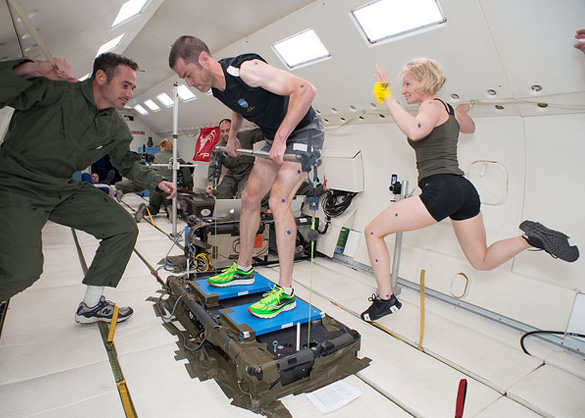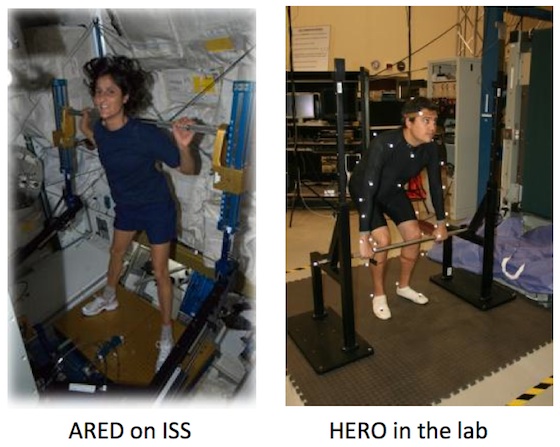Hybrid Ultimate Lifting Kit (HULK) Device Demonstration during Parabolic Flight
PI: Gail Perusek, NASA/Glenn Research Center
PI: Gail Perusek, NASA/Glenn Research Center

- TA06 Human Health, Life Support and Habitation Systems
The analysis of the exercises and the equipment performance during parabolic flight will allow for comparisons to performance on the ground, improvements in design, improvements in exercise prescriptions, and user interface considerations that may be unique to a weightless environment. These activities will help validate the system for use in microgravity and allow the team to assess the readiness of the design for flight on-board the ISS. Currently, the device is scheduled for demonstration onboard the ISS in 2016, but accelerated scheduling (which completion of parabolic testing may allow) could move the project launch date to the end of fiscal year 2014.
Currently, the HULK device meets the exit criteria for TRL 4. Testing of this refined device in the parabolic aircraft will allow the project to meet the exit criteria for TRL 5. Since the planned destination for the system is the ISS, parabolic flight is an appropriate test bed for a “relevant” environment.
NASA
Testing on-board the aircraft will consist of a variety of resistive exercises that are currently prescribed to crew members on-board the ISS. Examples of typical exercises include: squats, heel raises, dead lifts, and bench presses. Four test personnel will be required for testing of the system during flight. One subject will be tested at a time, with two test personnel required for spotters and equipment operations, and the final person serving as the test operator. Four flight days are requested so that the exercises can be performed by multiple subjects, which is important so that the equipment and exercises can be validated for crew members of various body sizes and statures.
The configuration of the current device, though meant for mounting in the lab, will be easily modifiable for mounting in the aircraft. The device consists of metal frames that bolt-mount to the floor.

Technology Details
-
Selection DateAFO5 (Jan 2013)
-
Program StatusCompleted
- 2 Parabolic
Development Team
-
PIGail Perusek
-
Organization
-
SponsorNASA

